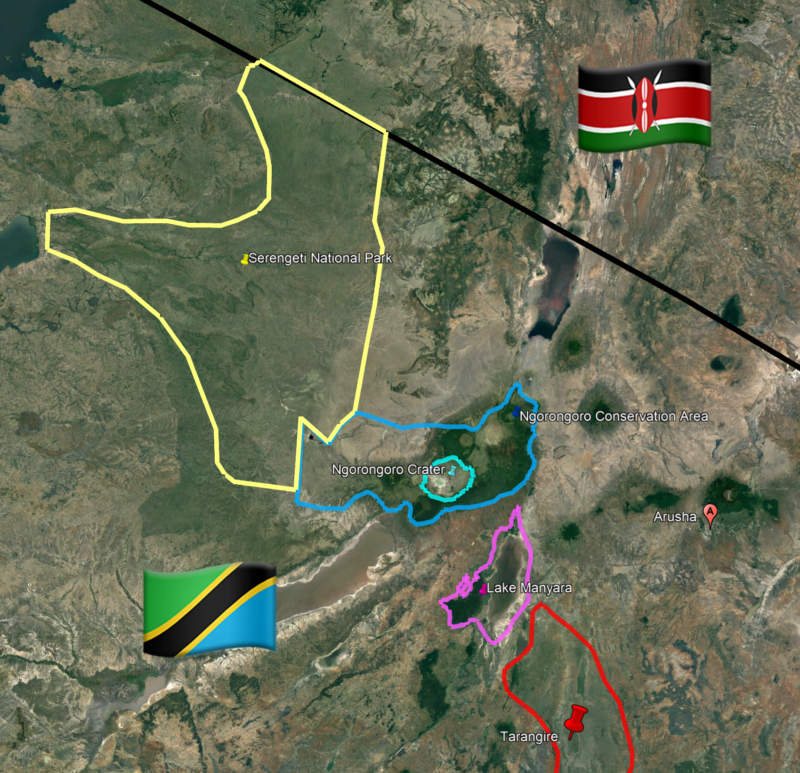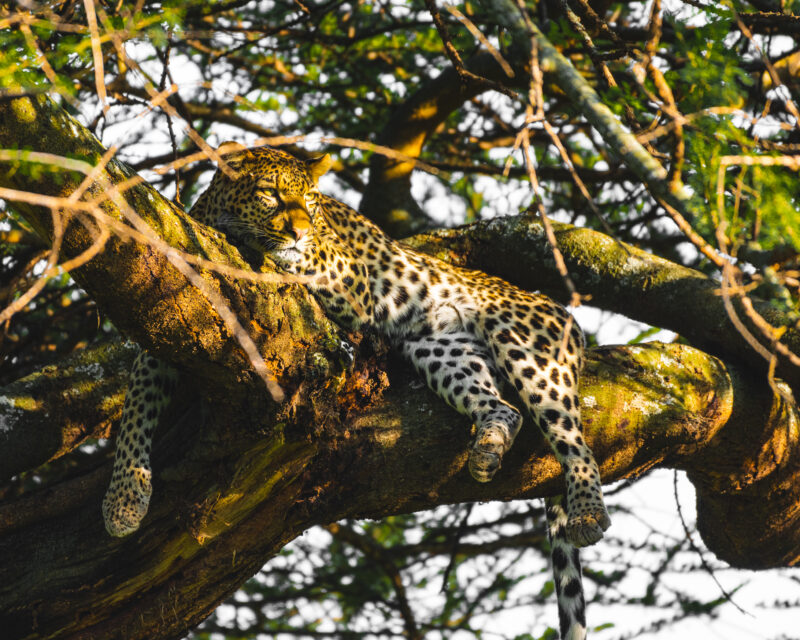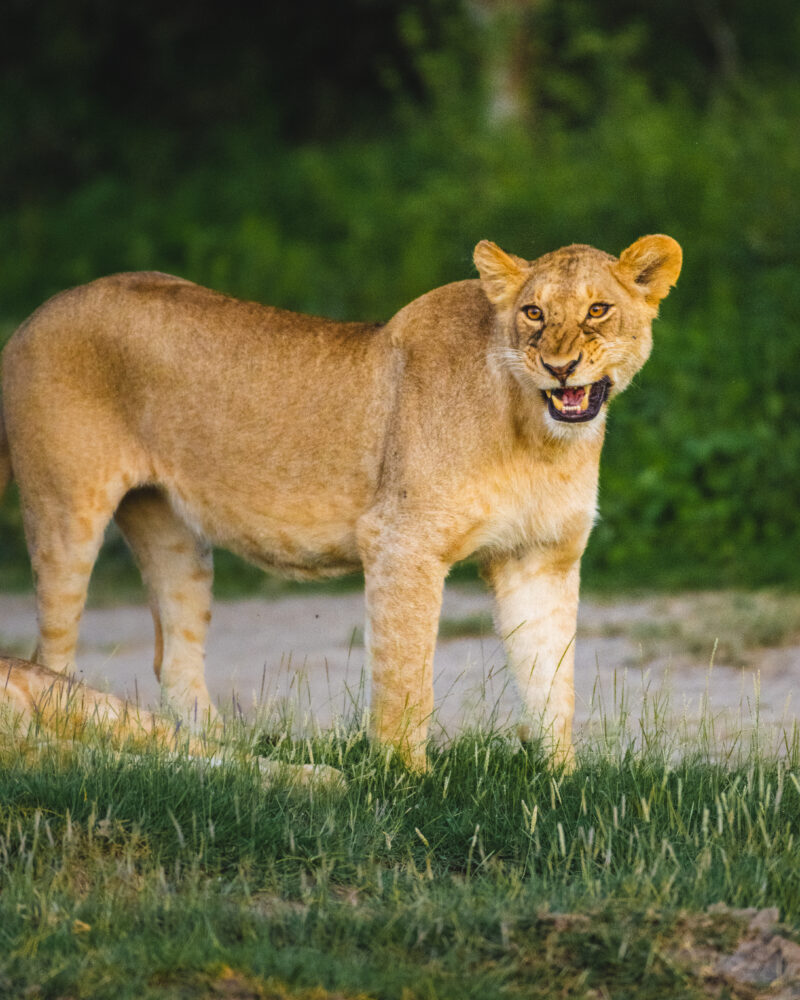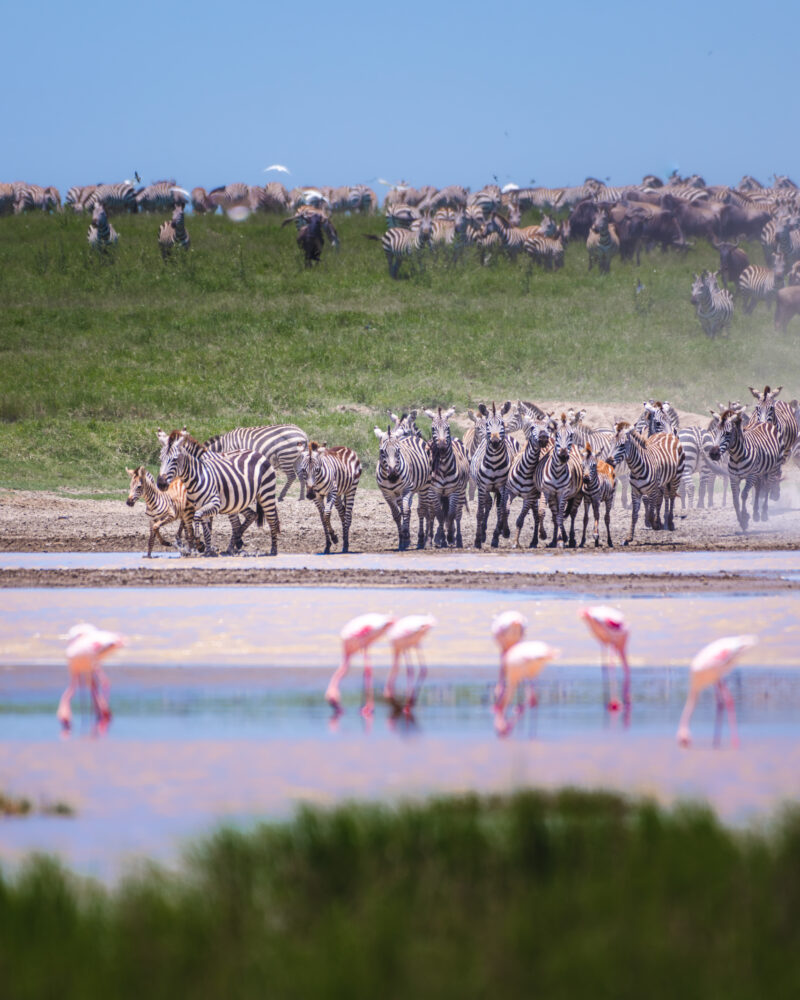Serengeti National Park
An Unforgettable Encounter with the Wild
The Serengeti National Park is a magnificent gem that holds within its boundaries an abundance of life and breathtaking landscapes. This protected area is situated in northern Tanzania and offers the quintessential African safari experience.
If you are a nature enthusiast or wildlife photographer, Serengeti should be on your bucket list!
Size of the Serengeti National Park
Spanning 14,750 square kilometers, Serengeti National Park is among the world’s most famous wildlife havens. Its diverse landscapes range from open grasslands and savannah with acacia trees to hilly regions, dense woodlands, and black clay plains.

A photo showing the size of Serengeti National Park, Tanzania
Rich amount of wildlife and animals
Serengeti National Park boasts a diverse wildlife collection with over 70 mammals and 500 bird species, including Africa’s Big Five. It’s known for its lion prides, tree-perching leopards, roaming elephants, and elusive black rhinos.
Beyond the Big Five, the park shelters zebras, gazelles, predators like cheetahs, and even Nile crocodiles and diverse dung beetles.

What is the Serengeti known for?
Perhaps the most famous spectacle in Serengeti National Park is the annual migration of over 1.5 million wildebeests, along with hundreds of thousands of zebras and gazelles.
This event, known as the Great Migration, is one of the most remarkable natural phenomena on the planet. The sights, sounds, and drama of this wildlife mass movement are an absolute thrill to witness.
Important information for visitors
When planning your visit to Serengeti National Park, you’ll have a range of options to consider. Accommodation choices span from camping and budget lodges to luxurious safari tents and lodges.
The park is accessible throughout the year, but the best time to visit would depend on what you want to see. For the wildebeest migration, December to July would be ideal. However, if you aim to see predators, June through October offers the best opportunities.
Visitors can explore the park through guided game drives, walking safaris, and even hot air balloon safaris, offering a bird’s eye view of the stunning landscape.

Reasons to visit Serengeti National Park
If the reasons above are not compelling enough, visiting the Serengeti offers more than just wildlife viewing. It’s an opportunity to immerse yourself in an untamed environment, a world away from the hustle and bustle of city life.
Experience the thrill of a hot air balloon ride at dawn, with the golden sunrise illuminating the vast plains of the Serengeti. Or, enjoy a tranquil evening around a campfire, gazing at the awe-inspiring African night sky.
Whether you’re a wildlife enthusiast, a bird watcher, a photographer, or someone seeking adventure, the Serengeti National Park offers a unique and unforgettable experience. Its immense size, abundance of wildlife, and the spectacle of the Great Migration make it a top destination for an African safari.
Northern Serengeti – The Heartbeat of the Great Migration
The Northern Serengeti, within the expansive 14,750-square-kilometer Serengeti National Park, is renowned for its landscapes and key role in the Great Migration. Bordering the Masai Mara in Kenya, this region is best visited between July and October, aligning with migration patterns influenced by rainfall.
Lodges and camps near the Mara River offer prime viewing of river crossings. While game drives are popular, a hot air balloon safari provides an aerial view of the migrating herds. A river crossing requires patience, with wildebeest often hesitating for hours or days; having binoculars and a camera is beneficial.
Witnessing the Great Migration’s drama, especially a Mara River crossing, is unforgettable. The Northern Serengeti’s serene plains, diverse wildlife, and stunning sunsets make it a top choice for safari lovers, ensuring a deep bond with nature.
Southern Serengeti and Ndutu: The Essence of Life in the Serengeti
The Southern Serengeti and Ndutu, parts of the famed Serengeti National Park, play a pivotal role in the Great Migration. This 14,750-square-kilometer area, including Ndutu in the Ngorongoro Conservation Area, sees the breathtaking cycle of life, survival, and renewal.
The highlight is the Great Migration, where over a million wildebeest, zebras, and gazelles traverse, especially during the calving season. From late January to March, the Southern Serengeti becomes a birthing ground for over 500,000 calves, drawing numerous predators.
Visiting from January to March allows witnessing the vast births and increased predator action. Accommodations range from luxury lodges to mobile migration camps, with game drives being a mainstay. Notably, Ndutu permits off-road driving for intimate wildlife experiences.
This journey offers unparalleled wildlife viewing during calving. Its open plains are ideal for wildlife photography, making this region a top choice for nature enthusiasts and photographers alike.

PACKING LIST


All of our safaris are custom and private. For quotes, it is best to submit an inquiry to our websites contact form. We will reply with general information regarding how we operate our safaris as well as estimates. From there, we can customize and plan your dream safari based on your preferences (number of days, number of guests, type of accommodation, domestic flights, etc).
